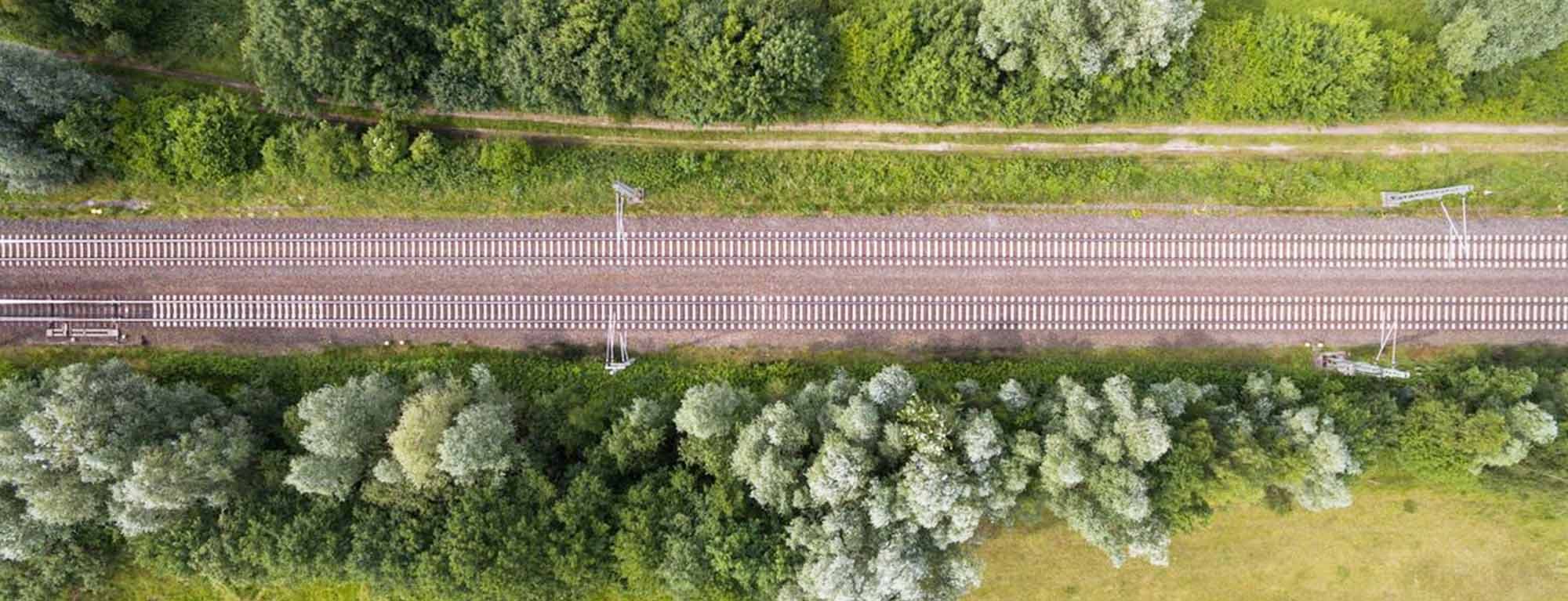
Home
Newsroom
Case Studies
Pléiades
Risk Modelling for Network Rai...
Vegetation Assessment Risk Modelling for Network Rail
The management of trees, shrubs and plants along the railway is essential for every network company. The challenge for the railway companies was to assess the risk of this coverage from both an environmental and economic point of view.
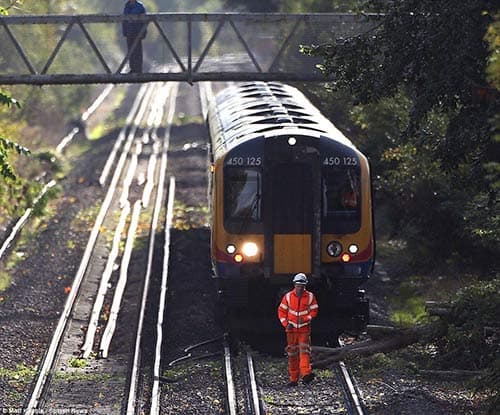
Challenge
Managing trees, shrubs and plants alongside the railway is essential for any network company. There are approximately 14 million trees that cover over 20,000 miles of rail track in the UK. The challenge faced by UK rail companies was assessing what the risk of this coverage is, both from an environmental and business perspective.
Autumn leaf fall causes operational problems for the signalling system and reduces trains' grip. Low adhesion caused by poor rail head conditions can affect train performance and punctuality in a number of ways, with passengers facing disruption due to train services being delayed, subjected to last-minute alterations or even cancelled. Overgrown trees and shrubs could cover up signals, if not cut back.
Another reason is to prevent the danger of trees falling onto the tracks due to age, disease or in windy weather. Trees or parts of trees, falling onto the railway don’t just create a safety risk. They can be the cause of thousands of pounds of damage and thousands of minutes of passenger and freight service delays.
There were over 470 incidents involving vegetation on the railway between April 2016 and March 2017 (source: Network Rail). The annual cost of vegetation impacts on train performance to the UK economy is estimated to be in the region of £100 million.
Looking to provide a solution to this, Airbus has developed an advanced vegetation management tool in partnership with FLAC (arboricultural partner) to keep the railways safe and operational; This solution was rolled-out nation-wide in the UK in 2015.
The solution, “Tree Factory” has the capabilities of processing remotely sensed data acquired along the main lines at a variety of resolutions and scales; from national-level assessments to local area studies.
The whole concept of the product is to predict which trees have the potential - for example - to fall during a storm, allowing Network Rail to take pre-emptive action and cut down any hazardous trees prior to a storm.
"From the first use of the data I was able to identify areas to be managed and remove the need for a tree survey in those locations. This allowed for immediate cost saving for the route."
"We can’t simply cut down every tree on the lineside; we have to consider the natural environment and the impact of our work on our lineside neighbours. The vegetation management data has the potential to completely change the way we carry out vegetation and tree management across the routes and will be an invaluable tool that can be used with our existing inspection records and asset data to help us make real asset management decisions."
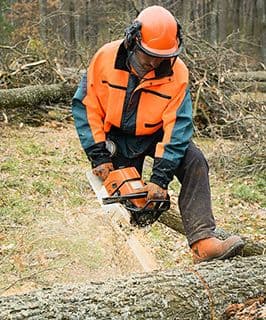
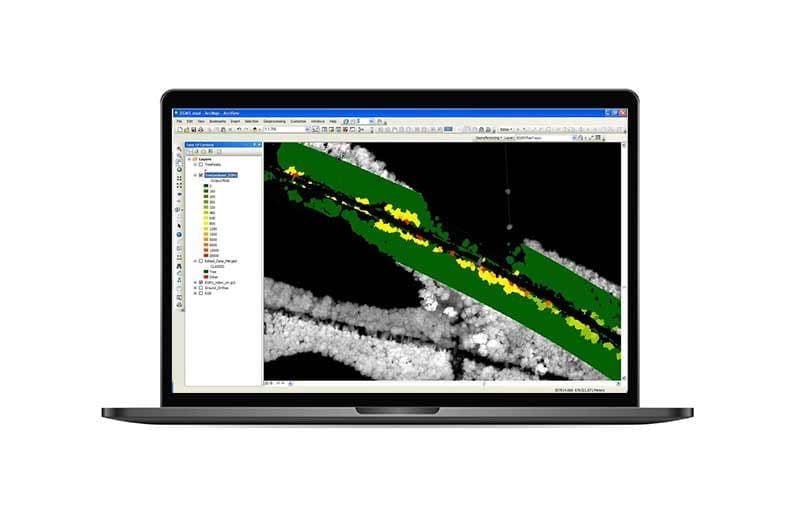

How does the Tool Work?
1st Stage: Data Preparation
The solution requires newly acquired or archive data. The inputs are LiDAR DTM, DSM & classified LAS (industry-standard binary format for storing airborne lidar data), 10cm aerial or 50cm Pléiades imagery, the rail network database and asset mapping derived from the aerial survey.
2nd Stage: Geometry Extraction
Fully automatic tree geometry extraction captures the apparent tree trunk position as a point and the tree crown extent as a polygon utilising the FLAC arboricultural model.
3rd Stage: GIS Attribution
Trees are then populated with GIS attributes including position, height & NDVI tree vitality, to the proximity of various assets. Risk factors are calculated based on FLAC arboricultural models.
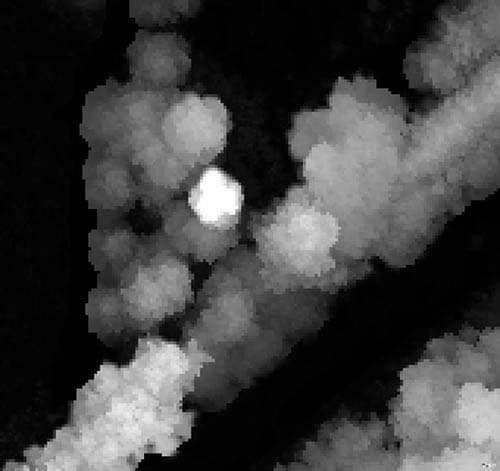
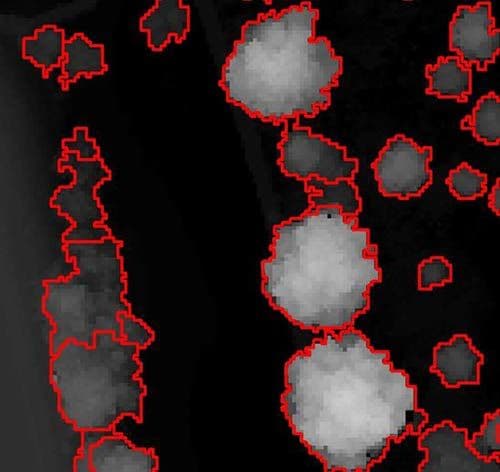
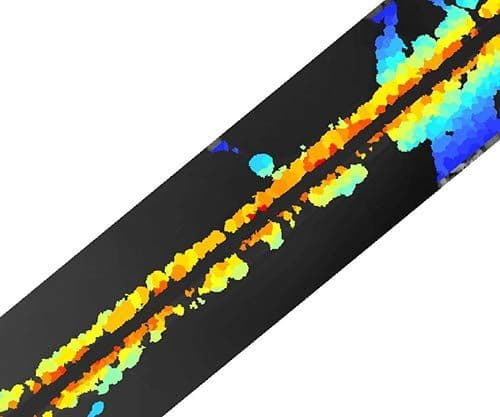
The tree database holds over 100 different attributes which are analysed producing assessments on the risk of trees to the network or likely impact a tree may have on derailment. Airbus has the knowledge and experience to develop and implement automated solutions on a national scale. Our vegetation risk database can be adapted for any national rail, road or utility network worldwide.
- Vegetation management
- Environmental impact
- Enhanced services: Line of sight impact Landslip risk
Airbus has the knowledge and experience to develop and implement automated solutions on a national scale. Our vegetation risk database can be adapted for any national rail, road or utility network worldwide.
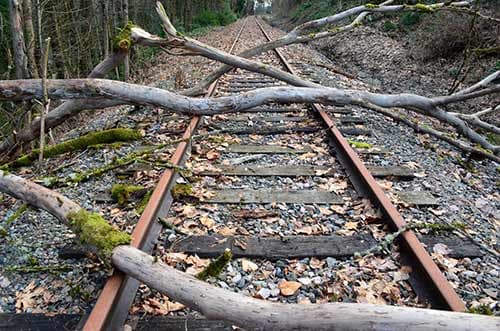
Benefits
- Through having a more targeted approach to vegetation management on the network, trees that pose a greater risk can be identified within their management section which avoids having to remove trees unnecessarily.
- There are significant cost savings in the region of hundreds of millions by helping engineers make smarter decisions and to improve overall safety.
- The end user is able to produce their own specific risk maps from the database, for example a Tree Census “heat map” of risky areas.
- Results of the tree clearance programme: 95% of trees require no immediate action, 2% require a reactive response and 3% of trees need to be cleared.
As the service proved its reliability, user-friendliness and high value, Kumba decided to integrate it in their mine in Komela, too.
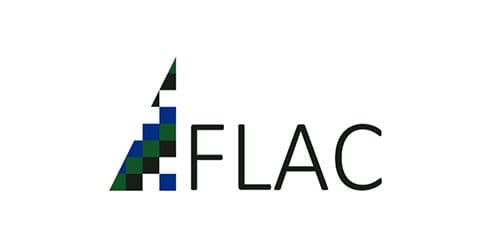
Organisation Involved
Forbes-Laird Arboricultural Consultancy (FLAC) provide expertise and risk models integrated with our solution in producing a tree risk database for infrastructure management.
Want to know more?
Our sales team will be happy to provide you more information about this case study and how it can meet your business needs.



